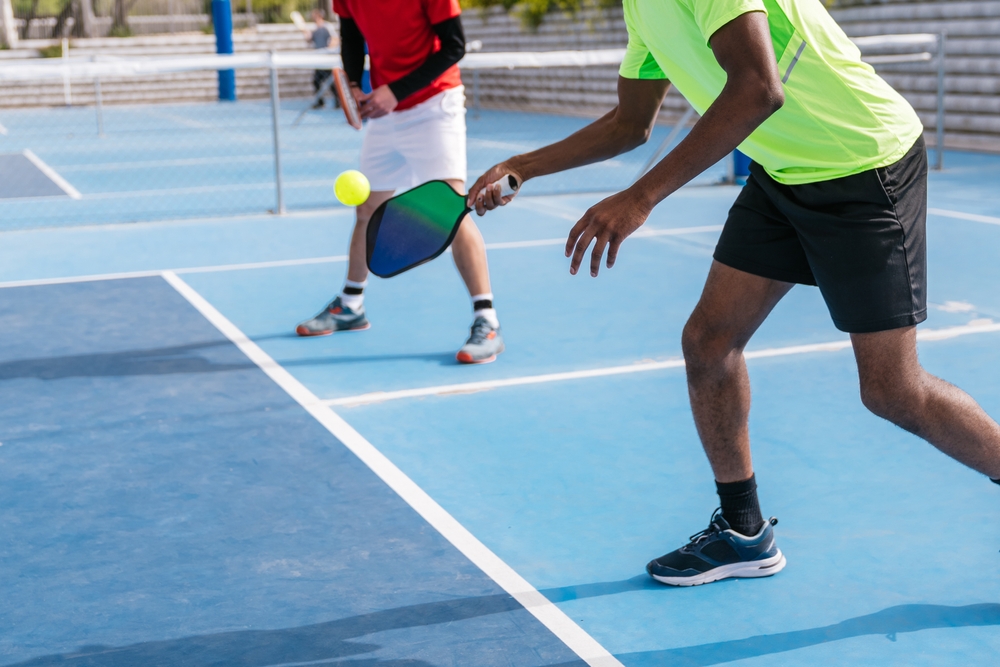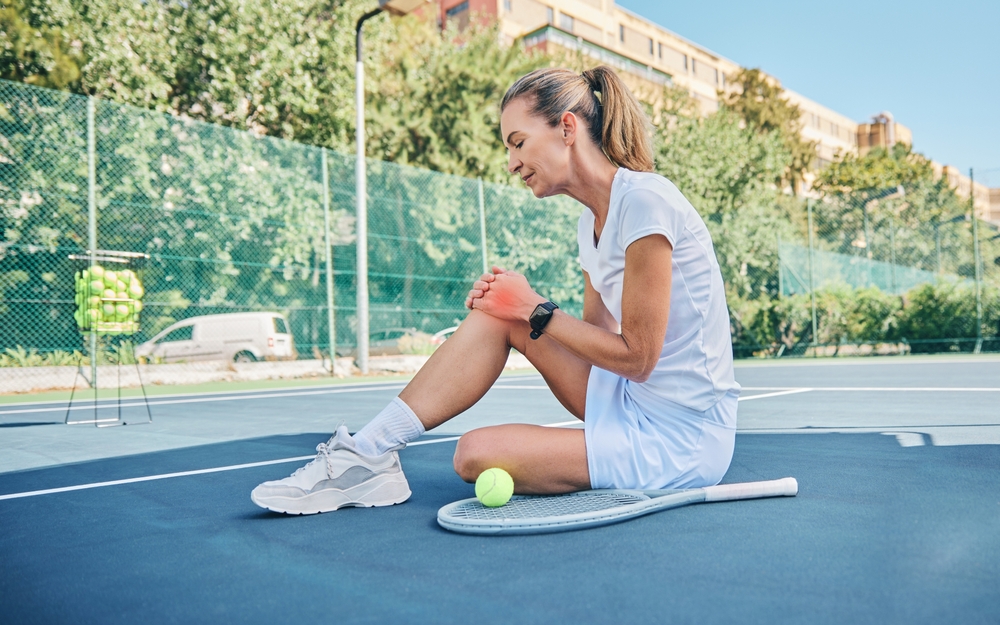Pickleball has quickly gained popularity as a fun, fast-paced game accessible to players of all ages and skill levels. While it’s generally a low-impact sport, pickleball can still strain the body, particularly if players are new to the sport or playing frequently. Knowing how to avoid common pickleball injuries can help keep you active, strong, and pain-free. Below are some common injuries to watch out for, plus practical ways to prevent them.
What Are Common Pickleball Injuries?
Pickleball’s rapid movements and repetitive motions can put players at risk for certain injuries. The most common injuries include:
- Calf Strains and Tears – Quick movements and sudden stops on the court can stress the calf muscles, leading to strains or even tears.
- Knee Arthritis Flares – Pickleball’s lateral movements can be hard on the knees, causing inflammation or pain in individuals with arthritis.
- Meniscus Tears – Quick pivoting can injure the knee’s meniscus, especially if the knee twists while bearing weight.
- MCL and LCL Strains – These ligaments stabilize the knee and can be strained during sudden side-to-side movements.
- Plantar Fasciitis – The repetitive pounding on hard courts can aggravate the fascia along the bottom of the foot, leading to painful inflammation.
- Hamstring Strains – Stretching too far or sudden sprinting can lead to hamstring strains.
- Achilles Injuries – Jumping and quick changes in direction can strain the Achilles tendon, particularly if it’s not warmed up.
- Ankle Sprains – The twisting motions in pickleball make ankle sprains one of the most common injuries.
- Tennis and Golfer’s Elbow – Repetitive swinging motions can lead to inflammation in the tendons of the forearm.
- Wrist Tendinitis – Playing with a bent or strained wrist can lead to tendinitis.
- Rotator Cuff Tendinitis and Tears – Serving and overhead shots can strain the shoulder muscles, particularly the rotator cuff.
- Labral Tears – Quick movements and heavy swings can cause labral tears in the shoulder joint.
Tips for Preventing Pickleball Injuries
Warm Up Properly
A proper warm-up prepares your muscles, joints, and ligaments for movement, helping prevent injury. Take 5–10 minutes to do light cardio, like brisk walking or jogging, to get your blood flowing. Then, move into dynamic stretches, focusing on the legs, shoulders, and lower back. Arm circles, lunges, and gentle hip rotations can help prepare the body for the twists and turns of pickleball.
Build Strength and Flexibility
Regular strength training, particularly for the legs, core, and shoulders, can go a long way in preventing injuries. Stronger muscles provide better support for the joints, reducing strain. In addition to strength training, incorporate flexibility exercises into your routine, like yoga or dedicated stretching sessions, to keep your muscles and joints limber.
Know Your Limits
Pickleball is exciting, but pushing too hard too quickly can lead to injury. If you’re new to the sport or getting back into it after a break, start slowly and ease into it. Focus on practicing good form rather than overexerting yourself, especially when it comes to sudden movements or hard swings. Gradually build your intensity and take breaks as needed to avoid overloading your body.
Wear Proper Footwear
Invest in shoes specifically designed for court sports, which provide the support and cushioning necessary for lateral movements and quick stops. Shoes with good grip help prevent slips, while adequate arch support and a stable heel help reduce the risk of plantar fasciitis, ankle sprains, and Achilles injuries.
Use Proper Technique
Improper technique is a common cause of injuries in pickleball, particularly for the wrists, elbows, and shoulders. To avoid unnecessary strain, work with a coach or watch instructional videos to master the fundamentals, such as gripping the paddle, swinging correctly, and positioning your body safely for each shot.
Take Time to Recover
Rest and recovery are crucial for injury prevention, especially if you’re playing multiple times a week. Listen to your body and give it time to rest when you feel soreness or stiffness. Adding recovery practices such as foam rolling, stretching, and icing sore spots can also help reduce inflammation and improve mobility.
Cool Down After Playing
Just as warming up is essential, a cool-down routine helps prevent injuries by promoting circulation and muscle recovery. Spend a few minutes stretching out the muscles in your legs, back, and shoulders after playing. This helps release any built-up tension and reduces the risk of muscle stiffness or soreness the next day.
Final Thoughts
Pickleball is a great way to stay active and engaged, but it’s important to take steps to protect yourself from injury. By warming up, building strength, practicing good technique, and knowing your limits, you can enjoy this fun sport while keeping your body safe. Following these injury prevention tips will allow you to keep playing pickleball with energy, confidence, and a reduced risk of injury.
Contact sports medicine specialist George Theodore, MD if you have a sustained a pickleball injury in the Boston area. Give us a call at (617) 724-7009 or request an appointment through our secure online form.
Sources:
https://www.houstonmethodist.org/blog/articles/2022/nov/pickleball-injuries-are-on-the-rise-heres-how-to-avoid-them/
https://www.yalemedicine.org/news/how-to-prevent-pickleball-injuries




